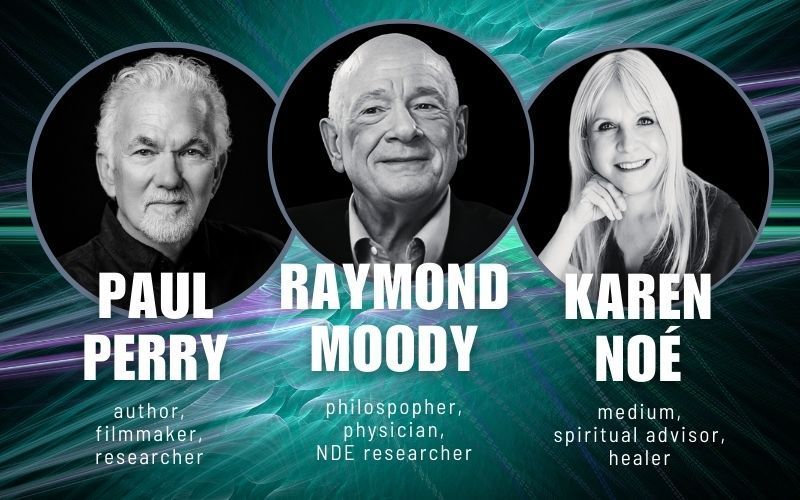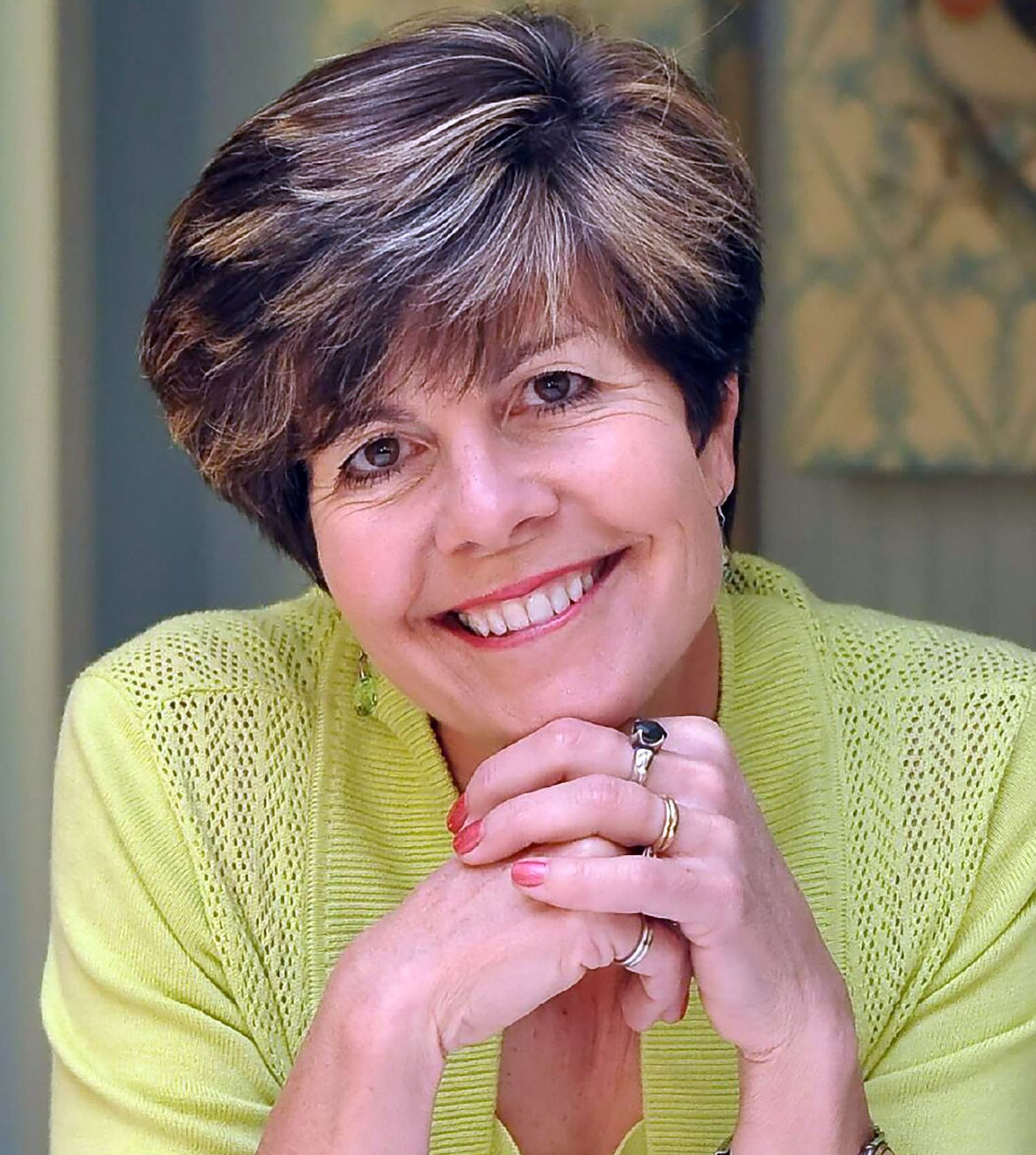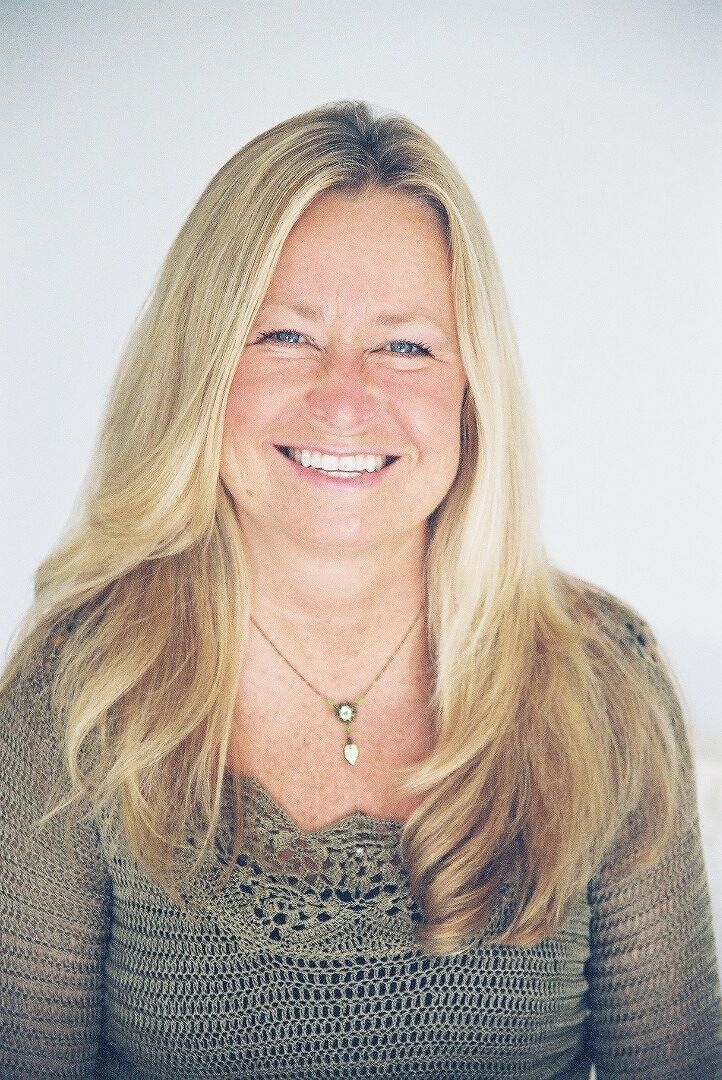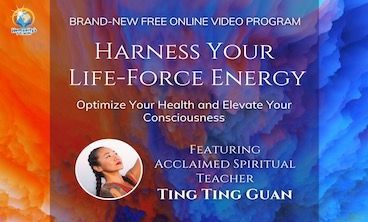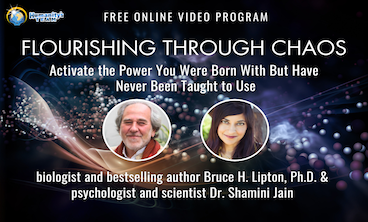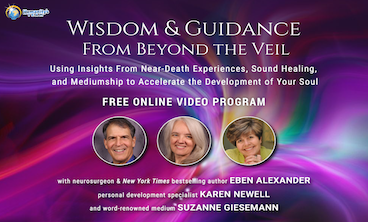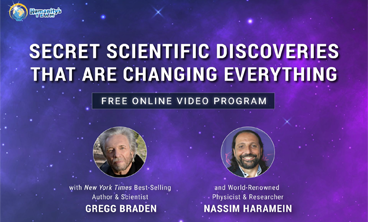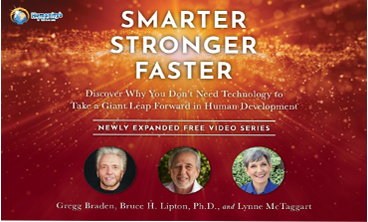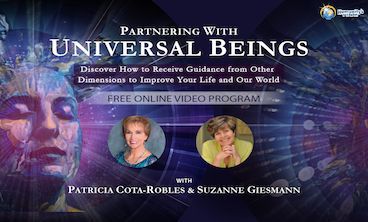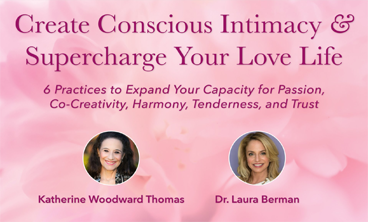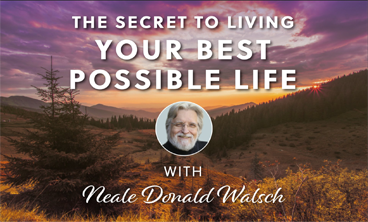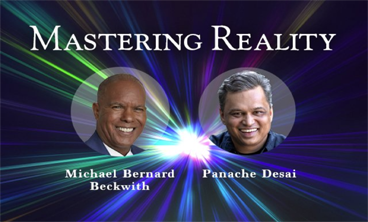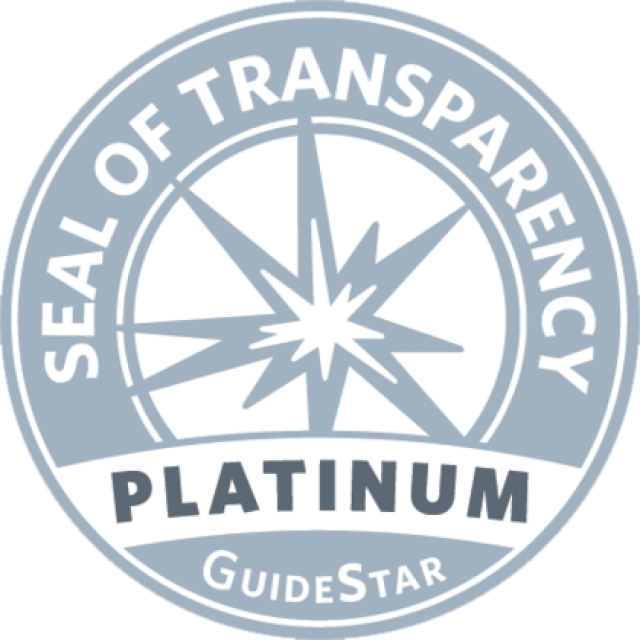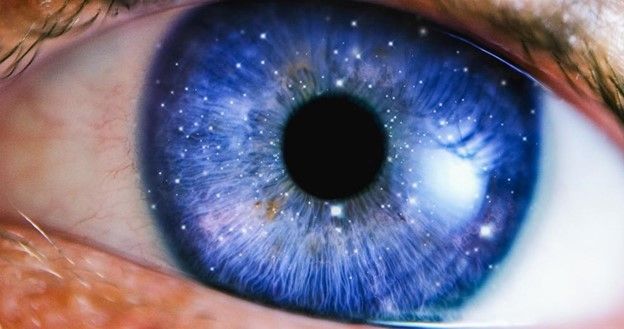
Can Consciousness be Measured?
If you ask a medical doctor or scientist if consciousness can be measured, the answer is likely to be yes. If you ask a spiritual teacher, philosopher, mystic, or an enlightened master, however, the answer could very well be no. Both answers are correct.
In order to measure consciousness, it is first helpful to define what that is. Yet as we can see with the following statements, defining consciousness is no easy task:
“Knowing oneself is all that consciousness means. Consciousness is never born, never becomes old, never dies. It needs no fuel, it needs no rest. It is pure energy, perpetual eternal energy.” – Osho
“What determines the quality of your consciousness? Your degree of presence. The very reason for our existence in human form is to bring that dimension of consciousness – Presence – into the world.” – Eckhart Tolle
“The main obstacle to man’s development is the lack of knowledge about the nature of consciousness itself.” – David R. Hawkins, M.D., Ph.D.
Even theMerriam-Webster Dictionary offers five definitions of consciousness, including:
1) the quality or state of being aware especially of something within oneself
2) the state of being characterized by sensation, emotion, volition, and thought
3) the totality of conscious states of an individual
Medical doctors use the second definition: the state of being characterized by sensation, emotion, volition, and thought. They can measure the consciousness states of the physical body when the body is awake, asleep, or in a coma. This can be referred to as a clinical measure of consciousness and employs tools such as an EEG to measure activity in the brain.
Spiritual teachers define consciousness as awareness. To be conscious is to be aware – and that awareness is not limited to the brain. On an individual level, it is an awareness that wehave a body and we have a mind, but Who We Are is not the body or the mind. We are the consciousness – the awareness – beyond both. Spiritual messenger Neale Donald Walsch describes it this way in Book Two of Conversations with God:
“You are all Aspects of Being, simply parts of What Is. Each part has the consciousness of The Whole embedded within it. Every element carries the imprint. ‘Awareness’ is the experience of that consciousness being awakened. The individual aspect of the All becomes aware of Itself. It becomes, quite literally, self conscious. Then gradually, it becomes conscious of all others, and then, of the fact that there are no others – that All is One. Then, ultimately, of Me.” – Neale Donald Walsch
Spiritual teacher Eckhart Tolle refers to consciousness as the primary factor in creation:
“No matter how active we are, how much effort we make, our state of consciousness creates our world, and if there is no change on that inner level, no amount of action will make any difference. We would only re-create modified versions of the same world again and again, a world that is an external reflection of the ego.” – Eckhart Tolle
The common component to both scientific and spiritual definitions of consciousness is awareness. Yet here it gets tricky. If being conscious means being aware of ourselves and the world around us, that suggests that consciousness is subjective and unique to each person. But what if consciousness is what some call the Unified Field of Energy or the collective consciousness that underlies and connects everything?
Quantum physicists contend that everything is consciousness since it is all part of the One. Yet our analytical minds love to measure, calculate, and compare to determine what is higher or lower, what is better or worse, what is more or less. The mind likes to categorize and dissect, rank and file. But logic and reason, the very things we would use to measure consciousness, are themselves limited. Consciousness is vast, it is the totality. The mind is limited and mechanistic. So, how can something finite and limited measure the infinite?
David R. Hawkins, M.D., Ph.D. was a psychiatrist, clinician, and researcher who reached the state of consciousness known as Enlightenment. As both a medical scientist and spiritual seeker, he was a pioneer in his ability to bridge the gap between science and spirituality. With his decades of research, clinical studies, and personal exploration, he was able to calibrate and map the levels of consciousness.
In the original foreword of David Hawkins’ revolutionary bookPower vs. Force, editor E. Whalen notes:
“Dr. Hawkins’s most fertile discovery was a means of calibrating a scale of relative truth by which intellectual positions, statements, or ideologies could be rated on a range of 1 to 1,000. One can say, ‘This item (book, philosophy, teacher) calibrates at 200 (Y/N), at 250 (Y/n),’ and so on, until the point of common weak response determines the calibration. The enormous implications of these calibrations was that for the first time in human history, ideological validity could be appraised as an innate quality in any subject.”
“Through twenty years of similar calibrations, Hawkins was able to analyze the full spectrum of the levels of human consciousness, developing a fascinating map of the geography of man’s experience. This ‘anatomy of consciousness’ produces a profile of the entire human condition, allowing a comprehensive analysis of the emotional and spiritual development of individuals, societies, and the race in general. So profound and far-reaching a view provides not only a new understanding of man’s journey in the universe, but also a guide to all of us as to where we and our neighbors are on the ladder of spiritual enlightenment, and on our own personal journeys to become who we could be.”– E. Whalen
At the bottom of the scale is Shame – the lowest state of consciousness. As we climb up the rungs of consciousness, we next come to Guilt, Apathy, Grief, Fear, Desire, Anger, and Pride. Those states represent the bottom half of the ladder of consciousness and is currently where the majority of humanity resides most of the time.
The top half of the ladder begins with Courage and then climbs to Neutrality, Willingness, Acceptance, Reason, Love, Joy, Peace, and Enlightenment. Although Enlightenment (otherwise known as Absolute Awareness) represents the highest point, for most of us, Love and Peace are the highest achievable states.
“With each progressive rise in the level of consciousness, the ‘frequency’ or ‘vibration’ of energy increases. Thus, higher consciousness radiates a beneficial and healing effect on the world, verifiable in the human muscle response, which stays strong in the presence of love and truth. In contrast, non-true or negative energy fields induce a weak muscle response. That which weakens life energy is to be avoided: shame, guilt, confusion, fear, hatred, pride, hopelessness, and falsehood. That which uplifts life is to be realized: truth, courage, acceptance, reason, love, beauty, joy, and peace.” – Fran Grace, Ph.D., editor to the revised edition of David R. Hawkins’ Power vs. Force
You can gauge your own level of awareness through direct experience and by observing your moment-to-moment experience as an impartial witness.
“The best indication of your level of consciousness is how you deal with life’s challenges when they come. Through those challenges, an already unconscious person tends to become more deeply unconscious, and a conscious person more intensely conscious. You can use a challenge to awaken you, or you can allow it to pull you into an even deeper sleep.” – Eckhart Tolle
“If a person becomes more conscious, naturally his character is transformed. Anger is there because you are unconscious, greed is there because you are unconscious. To change your character is easy; the real work consists in changing your consciousness, in becoming conscious – more conscious, more intensely and passionately conscious. When you are conscious it is impossible to be angry, it is impossible to be greedy, it is impossible to be jealous, it is impossible to be ambitious.” – Osho
“Masters are beings who do not vacillate between levels of Awareness, but consistently select, with deliberateness and clear intention, the State of Consciousness from which they wish their thoughts, words, and actions to emerge.” – Neale Donald Walsch, Conversations with God, Book One
You can dive deeper into the science and mystery of consciousness and learn to raise your consciousness with several free courses from Humanity’s Team. In"Secret Scientific Discoveries that are Changing Everything," scientist Gregg Braden and Physicist Nassim Haramein explore how the universe is alive, intelligent, and ordered and that humankind is the product of more than random mutations or lucky biology.
The Truth Behind the Emotions We Feel, and How Consciousness and Mindfulness Can Elevate Our Emotional Well-Being
“Be a big girl. Do not cry. It’s not a big deal. You are being too dramatic. Boys don't cry. Toughen up. Be strong.”
Sound familiar? Perhaps. And, if not, then you are probably amongst the fortunate few who have had caregivers, partners, teachers, or families with a high level of emotional awareness and a keen understanding of not only the truth existing behind our emotions but also how we can feel and regulate them effectively.
For many of us, the phrases listed above sound all too familiar. They linger in our psyche, often to be remembered for years or decades. Time and time again, we were told by well-meaning people to suppress, ignore, repress, or dampen our emotions. They cared for us a great deal and were unable to tolerate seeing us in a state of pain or upset. Therefore, and because of our loved ones’ inability to witness us experiencing our emotions, and their inability to regulate their own emotions, most of us have had to spend the majority of our lives trying to fight off these emotions instead of learning how to tune into them and use them as our allies. Over time, we came to believe that our emotions are enemies we must conquer if we ever wish to live the lives we dream of living.
But, is this really the truth?
What Emotions Truly Are
The idea of "trapped emotions" is often associated with certain alternative and holistic healing practices, particularly in the context of energy psychology and energy medicine. Their concepts often revolve around the idea that emotions are forms of energy, just like everything else in our Universe (emotion = energy in motion). This simply means that whatever emotion we feel, for whatever reason, causes energy to be moved and flow through our body and circulate in our energy field. This is believed to be an electromagnetic-chemical reaction, affecting us on all dimensions and levels; affecting our body through the chemical reactions that happen and the hormones that are created, and impacting our energy field through the electro-magnetic exchanges.
While this perspective is not yet universally accepted within mainstream scientific and medical communities, some individuals find value in these concepts. It's important to approach this topic with an awareness of multiple perspectives.
Advocates of energy medicine suggest that if this energy becomes blocked or stagnant, it can disrupt the natural flow of energy in the body. Therefore, unprocessed or unresolved emotions may become "trapped" in the body and manifest as physical or mental symptoms or ailments. For example, chronic pain, tension, or illness may be linked to specific emotions that are believed to be trapped in the body's energy system. Some also believe that specific emotions are associated with particular organs or systems in the body. For instance, anger might be linked to the liver, and sadness to the lungs. The idea is that unprocessed emotions in these areas could contribute to physical ailments. Moreover, trapped emotions are thought to influence personality and behavior.
Individuals might exhibit certain patterns of thinking, reacting, or coping as a result of unresolved emotional experiences. However, this does not have to be the case. When we allow ourselves to simplyfeelour feelings (without resisting them, judging them, or trying to ignore or suppress them), these moving energies keep moving through us, and eventually get released from our bodies and energy field into the bigger universal energy field, without leaving a permanent effect on our lives. And through the power of consciousness, self-awareness, and mindfulness, instead of letting our emotions affect our lives, we can develop tools and skills within ourselves to better engage with our emotions, and instead of having them get stuck, allow them to gracefully flow and be released — leaving us feeling light, connected, grounded, and happy.
Understanding Consciousness and Mindfulness
Consciousness is the state of being aware of and able to perceive one's external surroundings and inner thoughts. It is also the lens through which we experience life. Mindfulness, on the other hand, is the practice of deliberately focusing one's attention on the present moment without judgment. It involves being fully engaged in what is happening both internally and externally without becoming overwhelmed by it.
Consciousness and mindfulness serve as gateways to self-awareness. By being conscious of our thoughts, emotions, and bodily sensations, we gain a deeper understanding of ourselves. This self-awareness allows us to recognize patterns, triggers, and habits that affect our emotional state. Consciousness and mindfulness enable us to respond rather than react to challenging situations by creating a pause between stimulus and response. This pause, or space, allows us to choose how we proceed in any given situation. This heightened control over our emotions leads to improved emotional regulation and resilience. Moreover, mindfulness practices, such as meditation and deep breathing exercises, have shown remarkable efficacy in reducing stress and anxiety. By anchoring ourselves in the present moment, we detach from worrisome thoughts about the future or regrets about the past, thereby alleviating immediate stressors.
Incorporating Consciousness and Mindfulness Into Our Lives to Improve Our Emotional Well-Being
Embracing consciousness and mindfulness isn't just a fleeting trend; it's a lifestyle shift that reaps profound emotional benefits. It's about actively engaging with life—embracing its beauty, acknowledging its challenges, and navigating its complexities with grace and resilience. By weaving consciousness and mindfulness into our daily routines, we foster emotional resilience, cultivate deeper connections, and pave the way for a more fulfilling, emotionally rich life. The journey toward emotional well-being begins with a simple step—the conscious decision to be present in each moment.
There are various ways for us to regulate our nervous systems and let our emotions move through us without leaving a permanent impact on our lives. By finding what works best for each of us, we now have the chance to not only get out of this battle with our own bodies and emotions, but actually use the wisdom hidden in our emotions to create a better life experience for ourselves and the world!
Helpful Self-Soothing Techniques to Regain Control and Find Balance When Faced With Difficult Emotions
Identify and Label Emotions: Start by identifying and labeling the specific emotions you are feeling. Often by simply putting a name to what you are experiencing can provide clarity.
Journaling and Self-Reflection: Write down your thoughts and emotions. Take time to reflect on the underlying causes of your emotions, including past experiences, triggers, and patterns that may contribute to your current feelings. Consider possible solutions or coping strategies. This can help you gain insight into the root of your emotions and provide a sense of release.
Mindfulness Meditation: Practice mindfulness to observe your emotions without judgment. Meditation can help create a sense of detachment, allowing you to see your emotions more objectively.
Connect with Others and Talk About It: Share your feelings with a trusted friend, family member, or therapist. Verbalizing your emotions and sharing them with someone you trust and who would listen to you without judgment or criticism can be cathartic and can provide you with support, new perspectives and validation.
Artistic Expression: Express your emotions through art, such as drawing, painting, or writing. Creativity can be a powerful outlet for processing and releasing emotions.
Body Movement and Exercise: Engage in physical activity to release pent-up energy and tension. Exercise triggers the release of endorphins, has positive effects on mood, and can help regulate emotions.
Grounding Techniques: Use your senses to connect with the present. Describe five things you can see, four things you can touch, three things you can hear, two things you can smell, and one thing you can taste.
Cognitive Restructuring: Challenge negative thought patterns. Evaluate the accuracy of your thoughts and consider alternative, more balanced perspectives.
Self-Compassion: Be kind and understanding toward yourself. Acknowledge your feelings without judgment, and remember that it's okay to experience and express emotions. Self-compassion can help you navigate them more effectively.
Breathing Exercises: Practice deep breathing exercises to calm the nervous system. This can help regulate emotions and reduce the intensity of your emotional response.
- Inhale deeply through your nose, counting to four.
- Hold your breath for a count of four.
- Exhale slowly through your mouth for a count of four.
- Repeat these simple steps until you feel a sense of calm or groundedness.
Mind-Body Techniques: Explore practices like yoga or tai chi, which integrate physical movement with mindfulness and can promote emotional balance.
Acceptance and Commitment Therapy (ACT): Focus on accepting your emotions without judgment and commit to actions aligned with your values. ACT encourages psychological flexibility.
Setting Boundaries: Evaluate if there are external factors contributing to your emotions. If so, consider setting healthy boundaries to protect your well-being.
Gratitude Practice: Shift your focus by reflecting on things you are grateful for. This can help reframe your perspective and foster a more positive mindset.
Progressive Muscle Relaxation (PMR): Tense and then slowly release each muscle group in your body, starting from your toes up to your head. This helps release physical tension associated with strong emotions.
Listening to Music: Choose calming music or a playlist that resonates with your emotions. Music can have a powerful impact on mood.
Create a Safe Space: Designate a physical or mental space where you feel safe and secure. Visualize this place when you need to retreat and regroup.
Aromatherapy: Use scents that are calming to you, such as lavender or chamomile. This could be through essential oils, candles, or other methods.
Limit Stimulants: Reduce intake of stimulants like caffeine and sugar, as they can exacerbate feelings of anxiety and stress.
Try Things Out, Keep What You Like
Remember that everyone is different, and it may take some trial and error to find the strategies that work best for you. Experiment with these techniques to find what works. Combining several methods may also enhance their effectiveness. And remember, being present isn’t about achieving perfection – it’s about embracing our imperfect, beautiful selves in each passing moment.
As decision makers, we get to choose how we come out on the other side of any experience. Do we use our emotions to our advantage – allowing our growth and development – or, do we allow it to break us – leaving us bruised, broken, and negatively affected? The choice is ours.
I have personally come to learn that:
- Emotions, as energies in motion, are messages from the Universe directed to our Inner Being. These messages deliver information about where our thoughts and attention are focused and whether or not this focus and attention is on what we desire and want to be, do, have, and experience (creating powerful positive emotions for us) or whether we are focused on what we do not want, what we fear, or something not aligned with that which we wish to experience (therefore, feeling some form of negative low-frequency emotion such as anger, frustration, fear, etc).
I read once somewhere that feelings are the language of our souls; in other words, feelings are how our inner being and truth try to communicate with us! This valuable information is far different than how many of us were once taught.
Now, instead of trying to ignore or suppress my negative emotions, I acknowledge them, asking myself, as Abraham says: what thought, word, or action am I involved in that is not aligned with what I truly desire? This awareness gives me a beautiful chance to shift my focus to what I do desire – an opportunity that both excites me and leaves me with a feeling of deep gratitude.
- Ican survive the feeling of my feelings, and I will be ok. Therefore, instead of distracting myself or using various numbing agents to make the feeling go away, I know that it is wise to simply sit with my feelings, breathe into them, and let them move through me. And, in the most magical way, albeit alongside some tears, these negative emotions do dissipate, the feeling of relief arrives, and I am able to move on in the flow and process of my day and my life.
Please take note that If at any time your emotions persist or become overwhelming, do not hesitate to seek professional support from a therapist or counselor. Seeking help when emotions become a problem that disrupts your life is a proactive and courageous step toward better mental health.
Here are some steps you can take:
- Recognize the Signs
- Acknowledge when your emotions are consistently impacting your daily life, relationships, work, or overall well-being.
- Recognize persistent feelings of sadness, anxiety, anger, or other emotions that interfere with your ability to function.
2. Self-Assessment
- Reflect on the intensity and duration of your emotional experiences.
- Consider whether you've tried coping strategies on your own and whether they have been effective.
3. Talk to Someone You Trust
- Share your concerns with a trusted friend, family member, or colleague. Often, discussing your emotions with someone you trust can provide valuable support and perspective.
4. Consider Professional Help
- Reach out to mental health professionals, such as psychologists, counselors, therapists, or psychiatrists. They have the training and expertise to help you navigate and manage challenging emotions.
5. Research and Choose a Professional
- Research mental health professionals in your area or online. Look for someone with experience in the specific issues you're facing, and consider their approach to therapy.
6. Make an Appointment
- Schedule an appointment with a mental health professional. Many therapists offer initial consultations to discuss your concerns and determine if they are a good fit for your needs.
7. Emergency Services
- If you're experiencing a mental health crisis or are in immediate danger, don't hesitate to call emergency services or a crisis hotline.
- Utilize Employee Assistance Programs (EAP), if you have access through your workplace, consider reaching out for confidential support and counseling services.
8. Online Resources
- Explore online mental health resources and platforms that offer therapy, counseling, or support groups. Many people find convenience and accessibility in online mental health services.
9. Support Groups
- Consider joining a support group where you can connect with others who may be experiencing similar challenges. This can provide a sense of community and understanding.
10. Medication Evaluation
- If recommended by a mental health professional, discuss the possibility of medication to help manage your symptoms. Psychiatric medications are often used in conjunction with therapy for certain mental health conditions.
11. Follow Through with Treatment
- Commit to attending therapy sessions regularly and actively participating in the therapeutic process. Be open to exploring different approaches and strategies to manage your emotions.
Please remember that seeking help is a sign of strength, and there is no shame in reaching out for support. Mental health professionals are trained to help you navigate challenges and develop coping mechanisms to improve your emotional well-being.
Let’s embark on this journey towards a more mindful and emotionally fulfilling life together. I would love to know what you think about this topic, and what tools you personally use to feel your emotions without having them affect you negatively?
In"Embodying Higher Consciousness: A New Way of Living on the Earth," modern mystic Andrew Harvey and planetary healer Jude Currivan show us how to raise our own consciousness every day and uplift the consciousness of our species into a more connected and compassionate way of living on Earth.
All of this and more is available on ourFree Courses page of our website, as well as our streaming service
Humanity's Team+,where you’ll find hundreds of masterclasses, programs, and meditations from acclaimed visionaries and thought leaders. We invite you to explore the free courses, articles, podcasts, and other resources available on our websitehere.
Share this post!
LATEST BLOGS
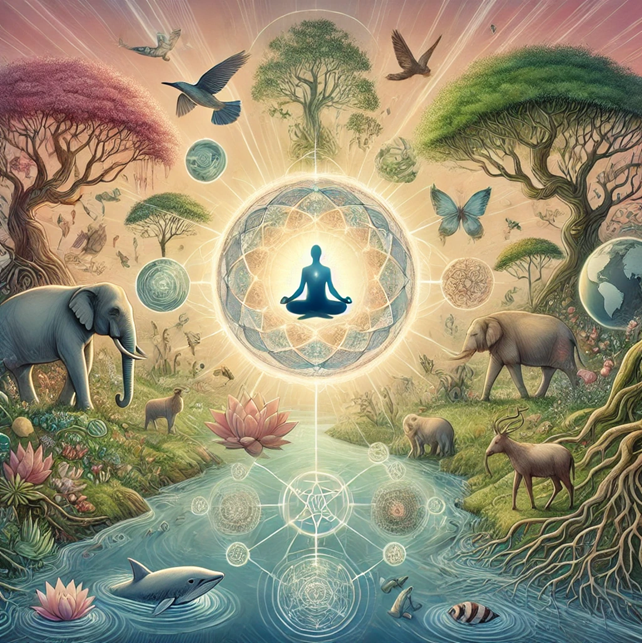



FREE PROGRAMS
LISTEN TO ONE OF OUR RECENT PODCASTS
Sign up now so you never miss a blog post, podcast,
or free event with Humanity's Team!


